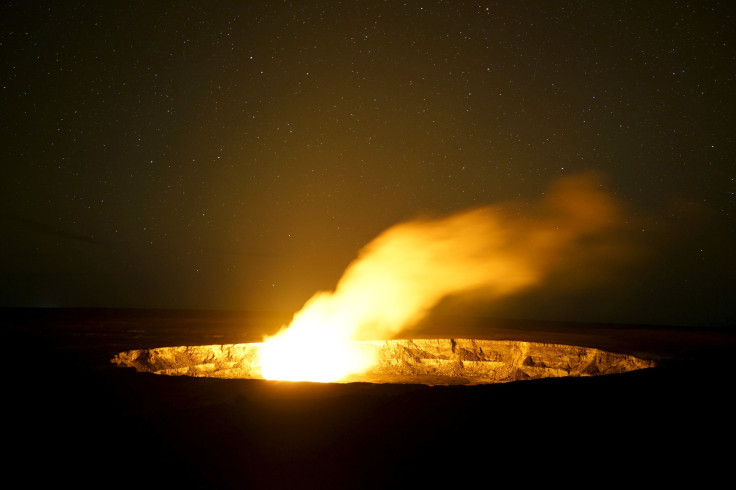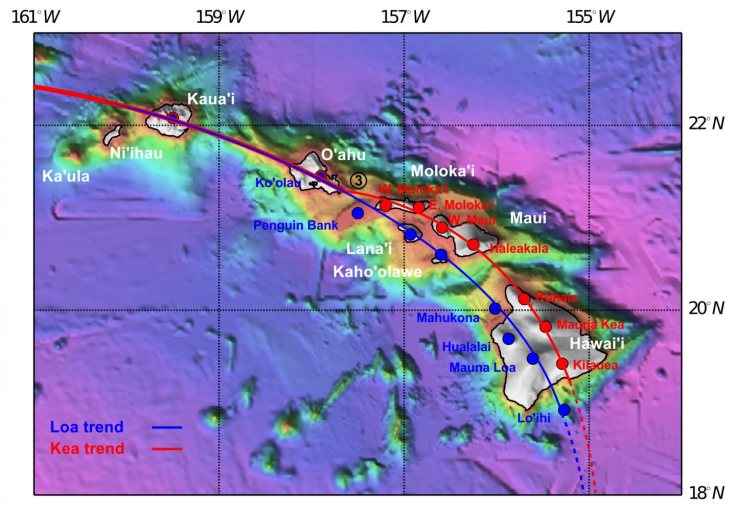World’s Biggest, Most Active Volcanoes In Hawaii Formed 3 Million Years Ago Due To Pacific Plate Shift

The large number of volcanoes in the islands that make up the state of Hawaii are not only the biggest and the most active in the world, they are also unusual in that they occur along two separate, though close, tracks. And while scientists have known of the existence of the twin tracks of the volcanoes since 1849, it is only now that they know how they were formed.
In a study published online Wednesday in the journal Nature, researchers explained that the volcanoes formed along the sub-parallel tracks when the Pacific tectonic plate changed direction about three million years ago. Tectonic plates are massive pieces of rock which lie under both continents and oceans, and volcanoes are usually found near tectonic plate boundaries. The magma from below the plates escapes through the gaps at the boundaries and causes volcanic activity.
Read: Why Do Volcanoes Erupt?
However, that would usually lead to one track of volcanoes. Also, the Hawaii islands are in the interior of the Pacific plate — the largest of the tectonic plates — and not near its boundary.
According to researchers behind the study, the twin volcanic tracks — called Loa and Kea — emerged in Hawaii because rising plumes of magma (called mantle plumes) were out of alignment with the direction of the plate motion, which saw a substantial change about three million years ago. Such twin volcanic tracks exist in other parts of the Pacific as well, like Samoa, and those appeared around the same time.
Rhodri Davies from Australian National University (ANU), a co-author of the study, said in a statement Wednesday: “Our hypothesis predicts that the plate and the plume will realign again at some stage in the future, and the two tracks will merge to form a single track once again. Plate shifts have been occurring constantly, but irregularly, throughout Earth’s history. Looking further back in time we find that double tracks are not unique to young Hawaiian volcanism — indeed, they coincide with other past changes in plate motion.”

Hawaii is the younger, southeastern edge of the chain of volcanoes and submerged seamounts that get older as the chain moves toward the northwest.
Lead researcher for the study, Tim Jones of ANU, said in the statement: “The discovery helps to better reconstruct Earth’s history and understand part of the world that has captivated people’s imagination. The analysis we did on past Pacific plate motions is the first to reveal that there was a substantial change in motion three million years ago. It helps to explain the origin of Hawaii, Earth’s biggest volcanic hotspot and one of the most popular tourist destinations in the world.”
The Nature paper was titled “The concurrent emergence and causes of double volcanic hotspot tracks on the Pacific plate.”
The boundaries of tectonic plates are also sites of earthquakes, which are caused by their movement. The plates likely developed very early in Earth’s history.
© Copyright IBTimes 2024. All rights reserved.




















